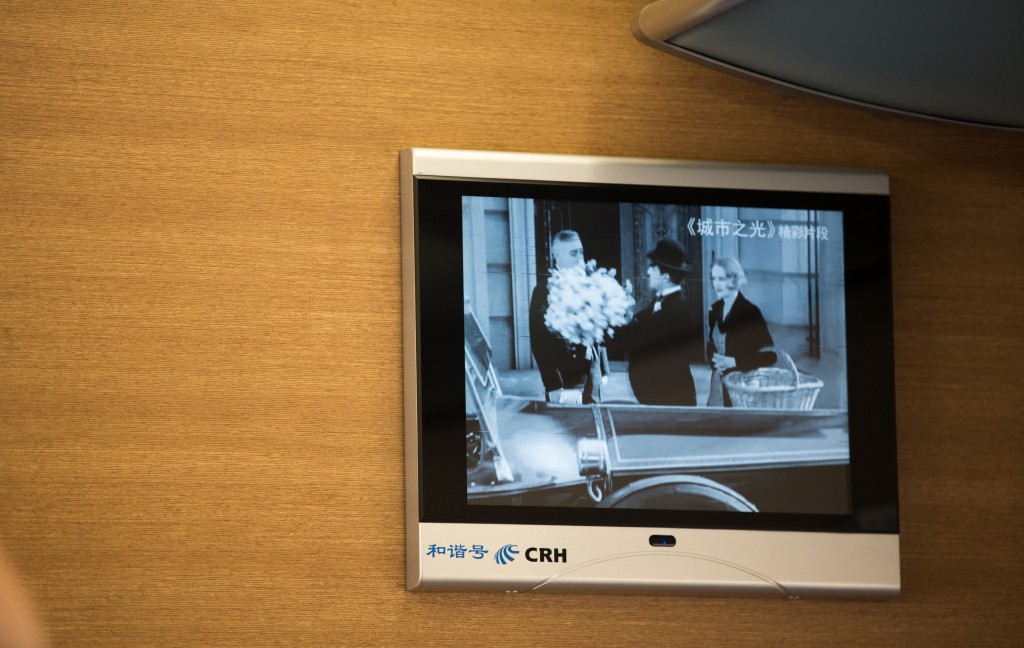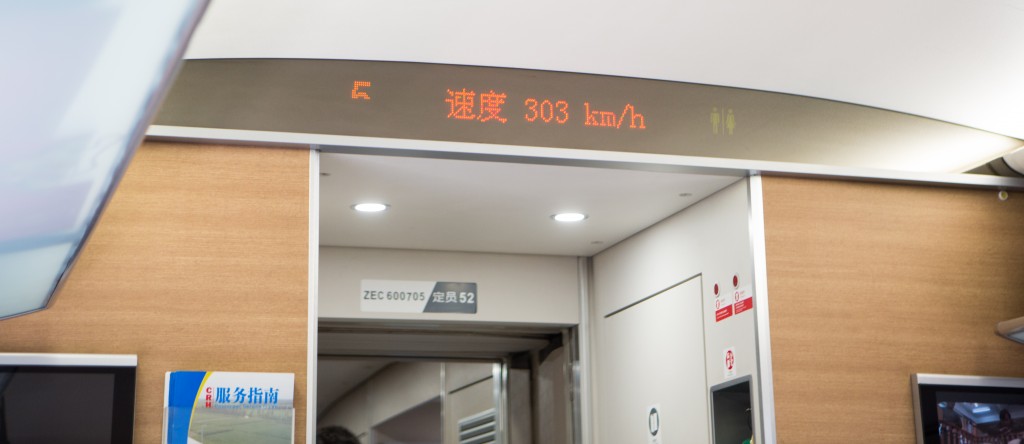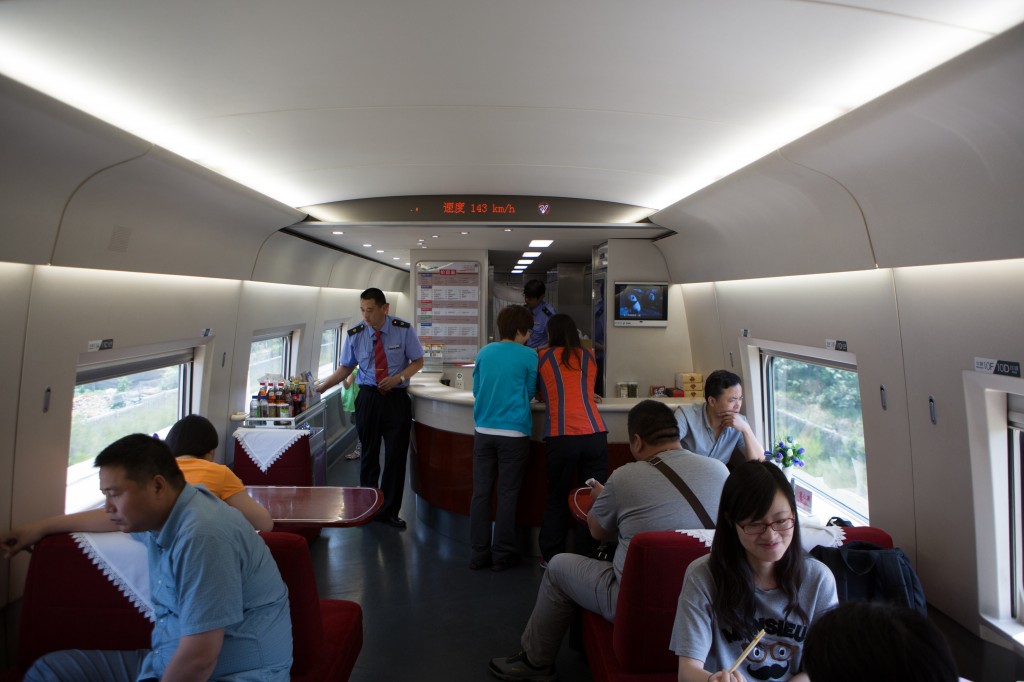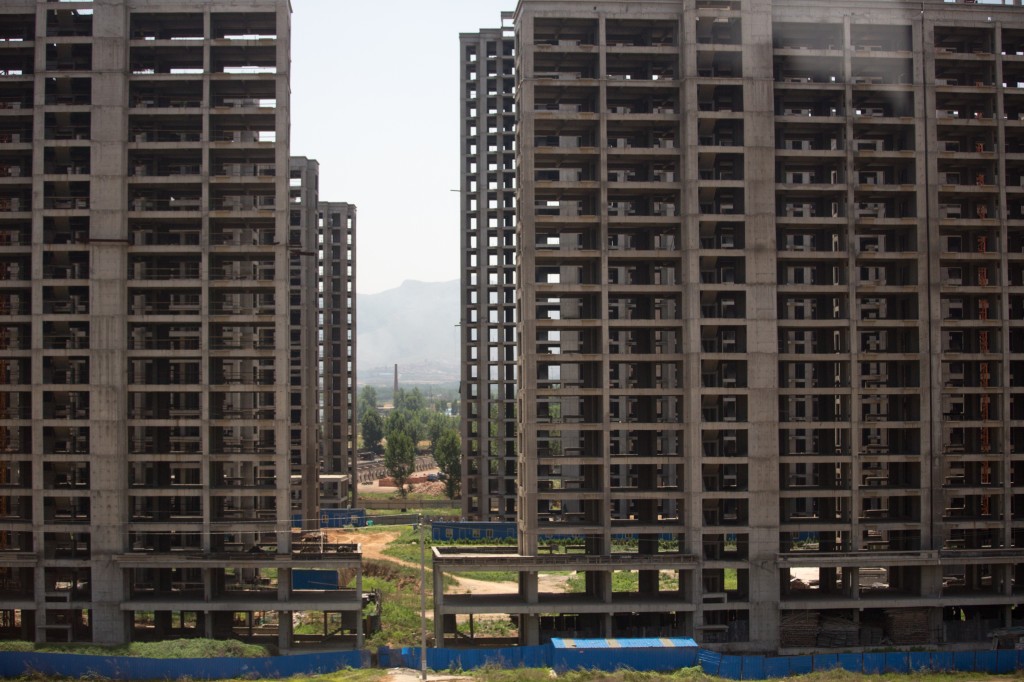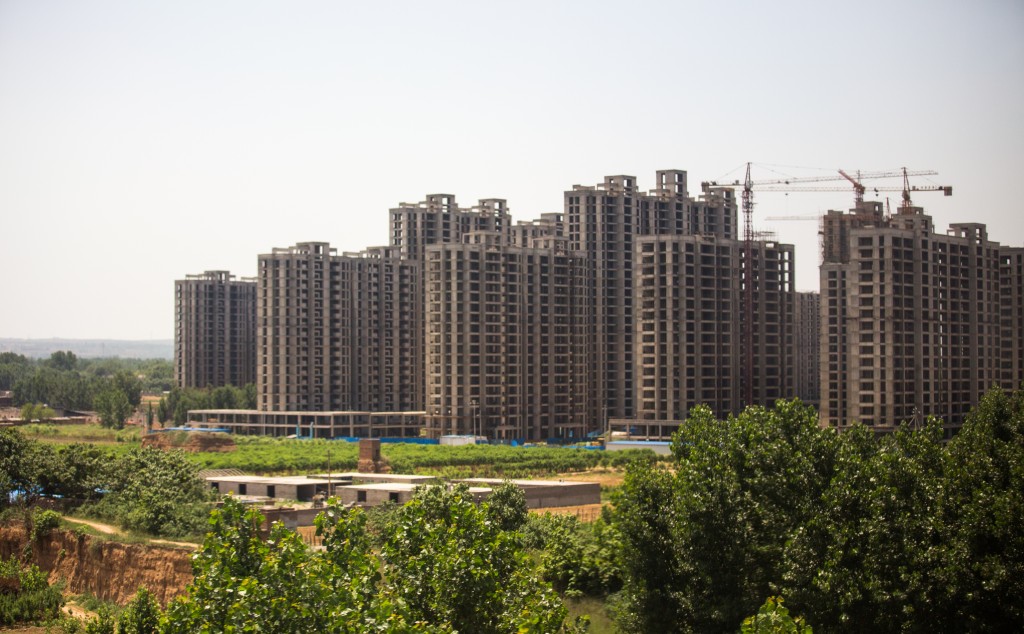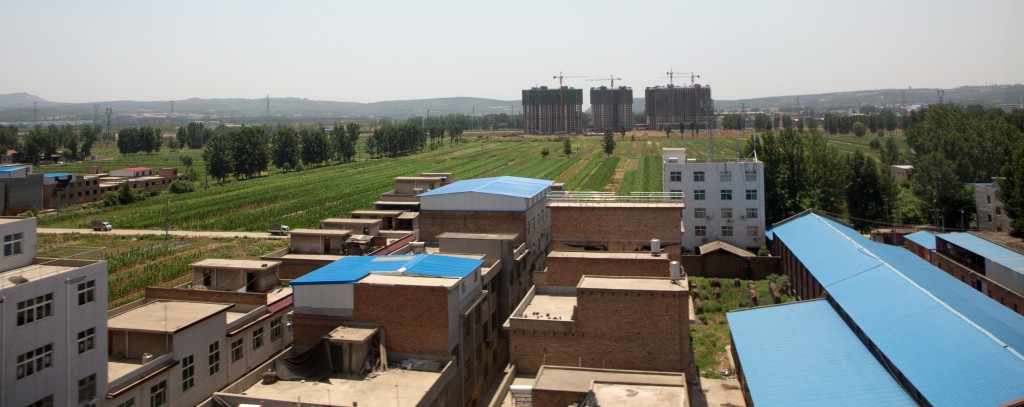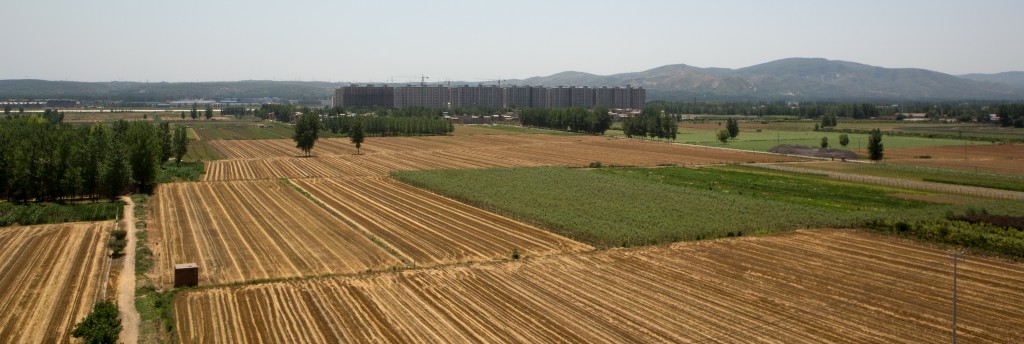City Lights, one of Charlie Chaplin’s most famous films, played on both the screens at the front of the car. Above it the speedometer flirted back and forth with three hundred kilometers per hour, about one hundred and eighty miles per hour. The numbers on the screen crept as high as three hundred and seven as we raced across the North China Plain.
Our project is about seeing China, talking to Chinese people and seeing China’s natural places as we travel west along the old route of the Silk Road, hitchhiking along the way. To get to Xian, the terminus of the Silk Road and the capital of many Chinese dynasties, we decided to take the newly built bullet train from Beijing, where Galen and I met up. In six hours, we covered almost seven hundred miles.
Like so many grand projects in China, the bullet train was impressive for its scale, its technological prowess and the rapidity it was produced with. The train’s speed blurred the landscape outside. Inside, the bathrooms were well-kept and the dining car was nicer than most restaurants in China. Beneath the train’s elevated platform, brown fields were dappled with peasants culling wheat from the arid ground. Shepherds herded sheep beneath us. It reminded me a little of northern India, thousands of villages squeezing everything they could get out of the arid dirt.
The cities where the train stopped seemed almost imaginary, emerging from out of nowhere. I would feel the tug as the train began to reduce its speed. The train’s speed would slip down to two hundred and fifty kilometers an hour, then one hundred and fifty, yet still, there was no sign of any urban development, only arid dirt and wheat farms, crisscrossed by tree-lined roads as far through the haze as you could see. Suddenly, a forest of cranes appeared on the right side of the train, each accompanying a thirty-story building.
A bullet train should only stop at major cities; if a bullet train were to stop at every rinky-dink town along its path, it would never be able to get up to its top speed, meaning its potential was wasted.
Yet, I had never heard of most of the cities we stopped at, though I had lived in China for two years. I had never seen these cities on any map of China. I had never met anyone from them. I had never heard of anything happening there throughout Chinese history. If I had not seen the miles of apartment towers stretching out towards the blue-gray horizon, I would not have believed the towns existed.
China has an amazing ability to build impressive infrastructure. That is a cornerstone of Chinese civilization, part of the myth of China. The Great Wall is the prime example. As we looked on at these cities, the sense of grandeur that I was first overcome with slowly gave way to skepticism. We looked at these cities, some of them seemingly completed, but we did not see many people in them. Their grand avenues were mostly empty. They had few shops or other commercial development, the hallmark of urbanism. One of the stops was even called New Rural Area City (新鄉市). Its name seemed to mock the idea that it could ever be a city.
Much has been reported in the Western media on cities that are built in China that have no one living in them, laying idle and unused, decaying after a few years. We only passed by them, so I don’t have much to say, other than to observe that they appear to be a facet of that ancient Chinese habit to impress through grand infrastructure projects without considering how the individual people who will use it fit into their scheme.
